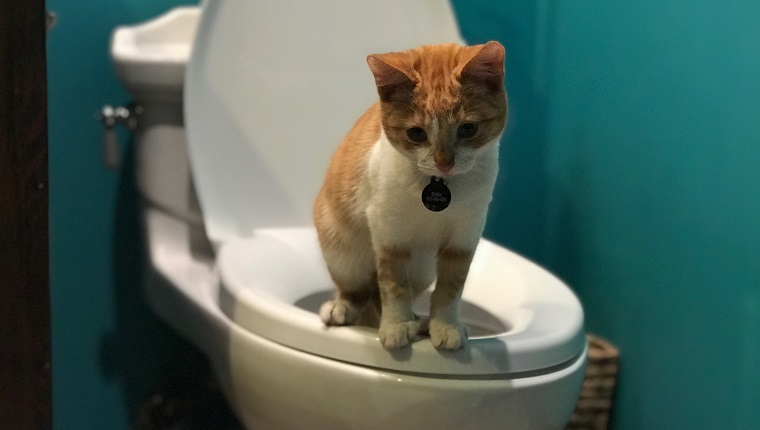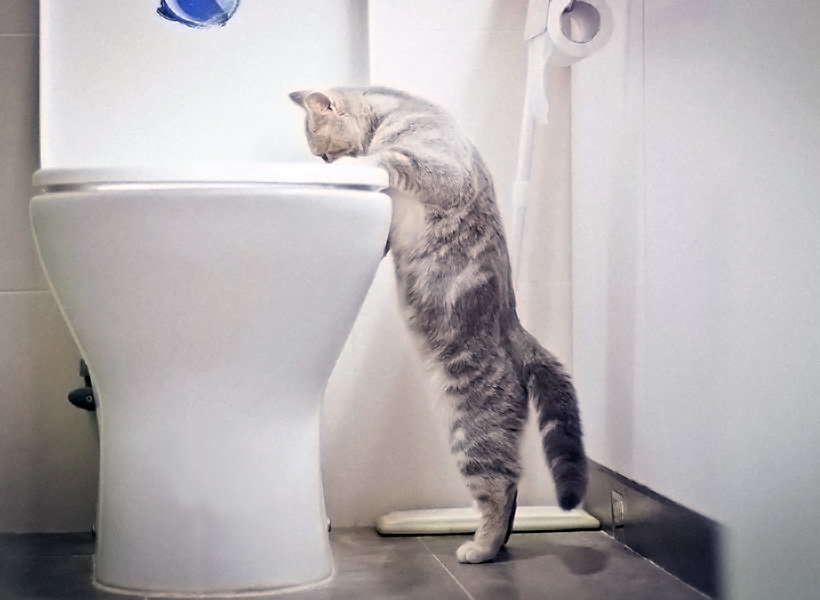Explanations Why You Need to Never Dispose of Animal Waste Down the Toilet
Explanations Why You Need to Never Dispose of Animal Waste Down the Toilet
Blog Article
Presented here underneath you can get lots of helpful content when it comes to Why you should never flush dog poop down the toilet.

When it involves throwing away waste, specifically animal waste, many individuals frequently resort to the convenient alternative of flushing it down the toilet. Nonetheless, this relatively simple remedy can have major effects for the atmosphere and public health. In this write-up, we'll check out why flushing animal waste down the bathroom is a negative idea and provide different techniques for proper disposal.
Intro
Appropriate garbage disposal is essential for preserving ecological sustainability and public health. While it might seem safe to flush animal waste down the bathroom, it can result in different concerns, both for the environment and human wellness.
Threats of flushing animal waste
Environmental impact
Purging animal waste presents dangerous microorganisms and virus into waterways, which can negatively impact aquatic communities. These microorganisms can infect water resources and damage aquatic life, interfering with delicate ecosystems.
Public health issues
Animal waste includes hazardous microorganisms such as E. coli and Salmonella, which can pose serious health and wellness risks to people. Flushing animal waste down the toilet can contaminate water materials, resulting in the spread of conditions and infections.
Alternatives to flushing
As opposed to purging pet waste down the toilet, there are numerous alternate disposal approaches that are extra eco-friendly and sanitary.
Composting
Composting animal waste is an environmentally friendly method to throw away it. By composting, organic matter is broken down into nutrient-rich soil, which can be used to feed gardens and plants.
Land fill disposal
Throwing away pet waste in a land fill is an additional alternative. While not as eco-friendly as composting, it is a safer alternative to flushing, as it stops the contamination of water resources.
Family pet garbage disposal systems
There are specific family pet garbage disposal systems offered that safely and hygienically throw away animal waste. These systems typically utilize enzymes to break down waste and get rid of odors.
Steps to appropriate pet garbage disposal
To ensure proper disposal of pet waste, adhere to these steps:
Scooping and nabbing waste
Frequently scoop and bag animal waste making use of naturally degradable bags. This avoids waste from contaminating the environment.
Making use of assigned waste containers
Dispose of bagged animal waste in assigned waste containers, such as compost containers or land fill containers. Avoid flushing it down the toilet whatsoever prices.
Cleansing can and family get more info pet locations frequently
Consistently clean litter boxes and animal areas to avoid the build-up of waste and bacteria. Use pet-safe cleansing products to preserve health.
Advantages of appropriate disposal approaches
Embracing correct disposal approaches for animal waste uses a number of benefits:
Decreased environmental pollution
Appropriate disposal techniques reduce the risk of environmental pollution, safeguarding rivers and ecological communities from contamination
Minimized threat of water contamination.
By avoiding flushing pet waste down the toilet, the risk of water contamination is substantially lowered, protecting public health.
Boosted cleanliness and health
Proper disposal techniques advertise far better sanitation and hygiene, developing a more secure environment for both humans and pets.
Final thought
Finally, flushing pet waste down the bathroom is hazardous to the setting and public health. By adopting alternate disposal approaches and following proper waste administration techniques, we can minimize the negative effect of pet waste and add to a cleaner, much healthier planet.
Why You Should Never Flush Cat Poop Down the Toilet
A rose by any other name might smell as sweet, but not all poop is created equal. Toilets, and our sewage systems, are designed for human excrement, not animal waste. It might seem like it couldn’t hurt to toss cat feces into the loo, but it’s not a good idea to flush cat poop in the toilet.
First and foremost, assuming your cat uses a litter box, any waste is going to have litter on it. And even the smallest amount of litter can wreak havoc on plumbing.
Over time, small amounts build up, filling up your septic system. Most litter sold today is clumping; it is made from a type of clay that hardens when it gets wet. Ever tried to scrape old clumps from the bottom of a litter box? You know just how cement-hard it can get!
Now imagine just a small clump of that stuck in your pipes. A simple de-clogger like Drano isn’t going to cut it. And that means it’s going to cost you big time to fix it.
For an amusing, graphic tale of what happens when you flush too much litter down the toilet all at once, take a few minutes to read Gene Weingarten’s 2017 Washington Post column “So that’s what happens when you flush cat litter down the toilet.”
Parasitic Contamination
Believe it or not, your healthy kitty may be harboring a nasty parasite. Only cats excrete Toxoplasma in their feces. Yet it rarely causes serious health issues in the cats that are infected. Most people will be fine too if infected. Only pregnant women and people with compromised immune systems are at risk. (If you’ve ever heard how women who are expecting are excused from litter cleaning duty, Toxoplasma is why.)
But other animals may have a problem if infected with the parasite. And human water treatment systems aren’t designed to handle it. As a result, the systems don’t remove the parasite before discharging wastewater into local waterways. Fish, shellfish, and other marine life — otters in particular — are susceptible to toxoplasma. If exposed, most will end up with brain damage and many will die.
Depending on the species of fish, they may end up on someone’s fish hook and, ultimately on someone’s dinner plate. If that someone has a chronic illness, they’re at risk.
Skip the Toilet Training
We know there are folks out there who like to toilet train their cats. And we give them props, it takes a lot of work. But thanks to the toxoplasma, it’s not a good idea.
Leave the toilet to the humans, and accept your future litter cleaning duty.

Consistently clean litter boxes and animal areas to avoid the build-up of waste and bacteria. Use pet-safe cleansing products to preserve health.
Advantages of appropriate disposal approaches
Embracing correct disposal approaches for animal waste uses a number of benefits:
Decreased environmental pollution
Appropriate disposal techniques reduce the risk of environmental pollution, safeguarding rivers and ecological communities from contamination
Minimized threat of water contamination.
By avoiding flushing pet waste down the toilet, the risk of water contamination is substantially lowered, protecting public health.
Boosted cleanliness and health
Proper disposal techniques advertise far better sanitation and hygiene, developing a more secure environment for both humans and pets.
Final thought
Finally, flushing pet waste down the bathroom is hazardous to the setting and public health. By adopting alternate disposal approaches and following proper waste administration techniques, we can minimize the negative effect of pet waste and add to a cleaner, much healthier planet.
Why You Should Never Flush Cat Poop Down the Toilet
A rose by any other name might smell as sweet, but not all poop is created equal. Toilets, and our sewage systems, are designed for human excrement, not animal waste. It might seem like it couldn’t hurt to toss cat feces into the loo, but it’s not a good idea to flush cat poop in the toilet.
First and foremost, assuming your cat uses a litter box, any waste is going to have litter on it. And even the smallest amount of litter can wreak havoc on plumbing.
Over time, small amounts build up, filling up your septic system. Most litter sold today is clumping; it is made from a type of clay that hardens when it gets wet. Ever tried to scrape old clumps from the bottom of a litter box? You know just how cement-hard it can get!
Now imagine just a small clump of that stuck in your pipes. A simple de-clogger like Drano isn’t going to cut it. And that means it’s going to cost you big time to fix it.
For an amusing, graphic tale of what happens when you flush too much litter down the toilet all at once, take a few minutes to read Gene Weingarten’s 2017 Washington Post column “So that’s what happens when you flush cat litter down the toilet.”
Parasitic Contamination
Believe it or not, your healthy kitty may be harboring a nasty parasite. Only cats excrete Toxoplasma in their feces. Yet it rarely causes serious health issues in the cats that are infected. Most people will be fine too if infected. Only pregnant women and people with compromised immune systems are at risk. (If you’ve ever heard how women who are expecting are excused from litter cleaning duty, Toxoplasma is why.)
But other animals may have a problem if infected with the parasite. And human water treatment systems aren’t designed to handle it. As a result, the systems don’t remove the parasite before discharging wastewater into local waterways. Fish, shellfish, and other marine life — otters in particular — are susceptible to toxoplasma. If exposed, most will end up with brain damage and many will die.
Depending on the species of fish, they may end up on someone’s fish hook and, ultimately on someone’s dinner plate. If that someone has a chronic illness, they’re at risk.
Skip the Toilet Training
We know there are folks out there who like to toilet train their cats. And we give them props, it takes a lot of work. But thanks to the toxoplasma, it’s not a good idea.
Leave the toilet to the humans, and accept your future litter cleaning duty.

Do you like more info about Don't Flush Your Pets Poo Down The Loo, Vet Warns? Leave a remark below. We would be pleased to see your opinion about this article. We are looking forward that you visit us again before long. Don't hesitate to set aside a second to share this article if you appreciated it. Thanks for your time invested reading it.
Get A Free Estimate Report this page